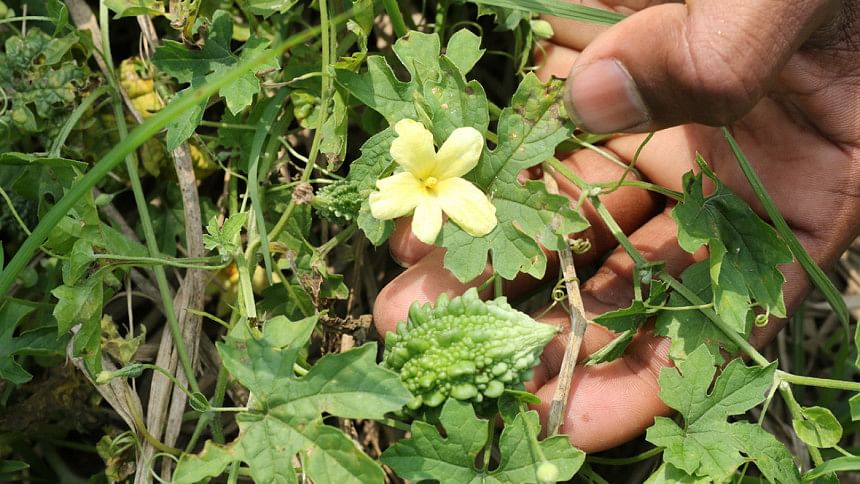The health benefits of bitter gourd

Bitter gourd, commonly known as korolla in Bangladesh, is a very common item in Bengali cuisine. Korolla chingrir bhaji and korolla aloo jhol are quite popular dishes in Bengali cuisine. Despite the bitter taste, the vegetable is highly consumed due to its extensive health benefits. Besides being used in different delectable dishes, the consumption of bitter gourd juice is also very popular.
Bitter gourd is an excellent source of Vitamins B1, B2, and B3, magnesium, folate, zinc, phosphorus, manganese, and has high dietary fibre. It is also great for purifying and increasing blood flow in the body. Antimicrobial and cancer prevention properties found in bitter gourd juice especially help treat and cure skin issues—acne, rashes, skin breakout, psoriasis, blood disorders, etc. Bitter gourd also aids in losing weight as it stimulates the liver to secrete bile acids that are essential for metabolising fat in the body. The vegetable also helps to reduce cholesterol. The presence of Vitamin C and other antiviral property helps to boost immunity, prevents bone formation, and heals wounds. Bitter gourd is also a great food source for people with diabetes. It has a specific insulin-like protein called polypeptide P that helps to lower blood sugar levels in diabetic patients.
Md Oliyer Rahman, a bitter gourd farmer from Shahbazpur, Jashore, shares his experience of growing this vegetable. Initially, the land is irrigated and inorganic fertilisers such as TSP, DAP and potash are applied. The bitter gourd seedlings are then planted. Irrigation is carried out once a week after planting the seedlings. Pesticides are usually applied at 10-20 days’ interval during the rainy season; they are not applied much in other seasons. Fertilisers such as TSP, potash, and urea are applied again once the bitter gourd flowers grow to a certain extent. Harvesting is usually done at alternate days when the fruits are young and tender.
Md Oliyer Rahaman, along with many farmers of the area, provides vegetables for Shwapno under the Shuddho project. According to Oliyer, this initiative has helped him adopt the right agricultural practices for growing bitter gourd, in terms of learning about how much fertiliser or pesticide should be used. Farmers also have an opportunity to learn about the interval period between pesticide application and harvesting, known as the Pre-Harvest Interval (PHI).
Bitter gourds are a great source of nutrients. They are highly beneficial for our health and wellbeing. So, make sure you include this nutritious vegetable in your basket the next time you go grocery shopping!
A joint initiative of Shwapno and The Daily Star

 For all latest news, follow The Daily Star's Google News channel.
For all latest news, follow The Daily Star's Google News channel. 



Comments